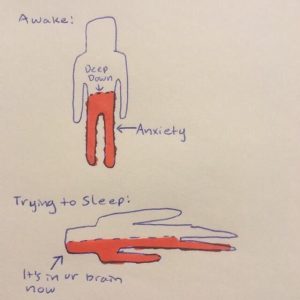Reconfiguring for Health
One of the things I would like to prioritize in the next year is healthier eating and movement. I’m aware of the cliche of having new health habits at the beginning of the new year, but I want to be healthier more than I want to avoid cliche. The key is to approach health in a healthy way.
I have an online friend who is in recovery from several eating disorders. She is vocally opposed to any sort of restrictive dieting. She speaks often about health and weight being separate things. Also about the ways the modern society mistreats fatness both socially and medically. I like seeing her perspective, though occasionally she gets very deterministic about health saying that it is genetically pre-determined and that there is very little an individual can do to control it. I’m not sure I buy into pre-determined health, just as I don’t believe nature has full power over nurture. Our choices matter in health just as they do in parenting or any other aspect of our lives. But the array of choices we’re offered is definitely affected by genetics. A person with an autoimmune disorder has a different set of health choices than someone who has diabetes. A person with athletic gifts has different choices than someone whose body doesn’t easily form muscles or manage fine motor skills. On top of that we have different body options at 20 than we do when we’re 50. Learning to work with our individual set of ever-shifting health choices is the work of a lifetime.
The goal then isn’t to pick a desired body configuration and contort my life to achieve that. Instead I need to pick an emotionally and physically health configuration for my life and then accept the responsive shape my body adopts in reaction to that life. Bodies are incredibly adaptive both in ways we want and ways that aren’t what we pictured. I’m carrying more body fat than I would prefer because my body is responding to my current mode of living, my age, hormonal shifts, and seasonal cues. It is trying to help me survive and thrive by storing abundance against future need. It is doing this because my pandemic life has been too sedentary. It has also featured food choices made for emotional reasons rather than good life maintenance ones. I’d like to readjust the balance of those portions of my life.
(Note: when I say “emotional reasons” I am not scowling at the choice to eat chocolate in an emotionally low moment. That has happened and I intend to keep treat food in my arsenal of treatments for mental health lows. Food is valid medicine, and like any other medicine its use needs to be monitored and kept within healthy bounds. It can be a real help for a bad evening, it is not an effective treatment for ongoing daily depression. However I’ve also been eating when I was bored. I want to watch a show, but want something else to occupy me companionably while I watch. Instead of eating-to-be-occupied I want to find a non-food option, like crochet or some other craft.)
Having decided that I want to reconfigure my life to include exercise and healthier eating, I then have to make a plan for implementing that decision. I need to put small obstacles between me and the thoughtless habits I would like to eliminate. I also need to smooth the path so I can easily flow into the habits I’d like to have instead. Where do I place exercise into my day? Can I attach it to some other task so that I don’t have to make a separate decision to exercise? How do I remind myself to be mindful about food choices? I haven’t fully got answers to these questions yet, but by stating the questions and looking at how my days currently run, I’ve begin the problem solving process.
Reconfiguring for Health Read More »
